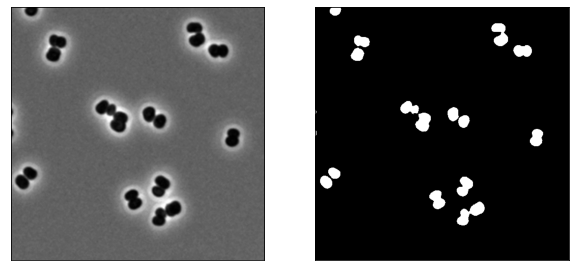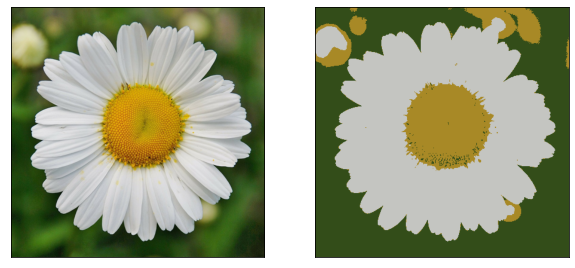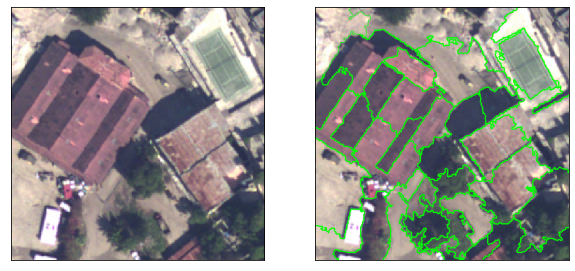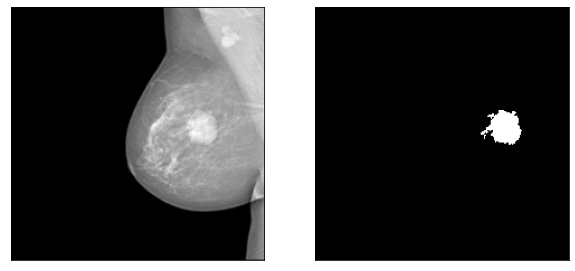Introduction#
Image segmentation consists of partitioning an image \(f\) according to a certain criterion. This means that the image is divided into regions \(R_i\) that are both mutually disjoint and collectively cover the entire image. Two pixels in the same region satisfy the criterion, but two pixels in two adjacent regions do not.
The figures below show several examples of segmentation.

Fig. 70 Example of segmentation on gray levels (left: original image, right: segmentation given as regions).#

Fig. 71 Example of segmentation on color (left: original image, right: segmentation given as regions, the colors of regions is the mean color of the pixels in the original image).#

Fig. 72 Example of segmentation on color with a constraint of the region size (left: original image, right: segmentation given as borders).#

Fig. 73 Example of segmentation on color (left: original image, right: segmentation given as regions).#
The result of segmentation is not unique: it depends on the criterion, the segmentation method, the initialization of the method, etc. There are many different segmentation methods and this chapter focuses on the more usual ones. Finally, we talk about how to measure the quality of segmentation.